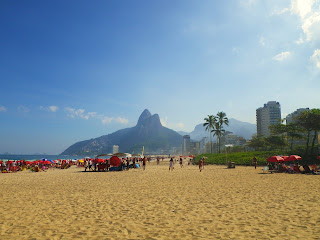 |
| Rio De Janeiro wonder of nature |
Rio De Janeiro is a travel among wild nature and culture, relax and fun. World known beaches full of life, and an exiting city. Rio De Janeiro bay is the biggest and most scenic bay on earth, meanwhile the rain forest that surrounds the city is the biggest urban national park in the world. Rio the Janeiro bay is considered a wonder of nature.
 |
| Rio De Janeiro bay |
Corcovado and Christ the Redeemer statue : Christ the Redeemer statue ( Cristo Redentor ) is the symbol of Rio De Janeiro, and one of the seven Wonders of the new world. It was built between 1922 and 1931 by the sculptor Paul M.landowski, and designed by the artist Carlos Oswald. The statue of Christ the Redeemer is 38 meters high and weighs 1145 tons. The greatest value of Christ the Redeemer statue is the position on the summit of Corcovado mountain, overlooking Rio De Janeiro bay. Corcovado is a granitic mountain of seven hundreds meters. With its central position on the bay : Corcovado mountain can be seen from almost any part of Rio De Janeiro. For this reason Corcovado was chosen as natural pedestal for the magnificent statue. Covered by an thick wild forest : Corcovado mountain is part of Tijuca national park.
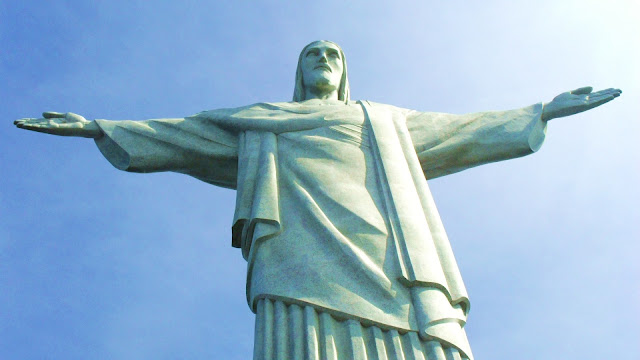 |
| Christ the Redeemer statue |
The train to Corcovado : This historical railway was opened in 1884 with steam hauled trains, and with electric trains from 1910. There are four trains leaving every thirty minutes from 8,30 to 20,00. The ride is about twenty minutes long. The train climbs the steep Corcovado mountain for 3.8 km, passing through the wild nature of Tijuca national park. This fascinating train brings you back in the past. For this reasons : The historical train is an essential part of the visit to Corcovado, and to Christ the Redeemer statue. The station is situated at Cosme Velho 513. It is also possible to reach Christ de Redeemer statue with tour buses right from the train station square,or to hike to the statue from Parque Lage gardens. If you decide to do the hike, you will need to purchase the ticket for the statue in advance.
Corcovado Train Info
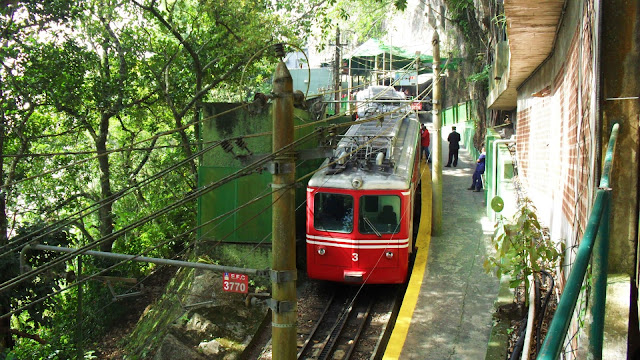 |
| Corcovado train |
Tijuca national park : Tijuca national park, with more than 3000 hectares, is the largest urban forest of the world. Travelers who like to hike in the wild nature, and wildlife photographers, will find in Tijuca national park a perfect place to spend more than one day. On the other end, normal travelers will have the occasion to experience the rain forest in just One-Day Tour. The rain forest of Tijuca national park has many entrances and kilometers of trails. Series of rain falls, and world known climbing areas. The most secure way to visit Tijuca national park is to purchase a tour from a travel agency.
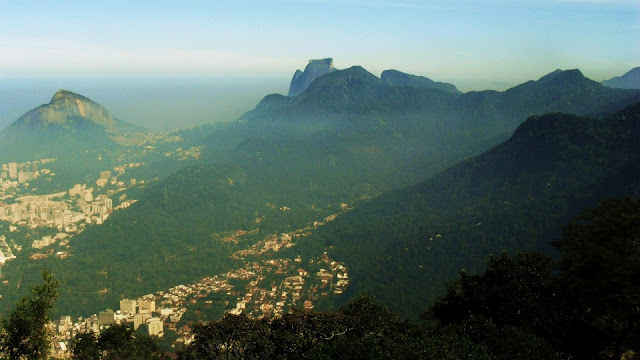 |
| Tijuca national park |
The hike to Christ the Redeemer. This is a very alternative adventurous way to visit the monument of Christ the Redeemer, yet an experience it self. This hike offers the possibility to see tropical plants and animals in their natural contest, though is not recommended to everybody, cause the high difficulty of the trail. Because of some robberies that append in the past : I advise to adventure in this trail with the company of a local, or to join a group. The trail starts inside the beautiful gardens of Parque Lage and ends few hundreds meters from the monument. This hike takes about three hours at the way up to the monument, and about two hours at the way back. Travelers that hike to the monument will have to purchase tickets for the statue in advance. The best way to me ( experienced ) is to reach the statue with the fascinating historical train and do the hike at the way back. Once back in Parque Lage Gardens you can visiti the superb Lage mansion. This Mansion built in the 19th century is an important monument of Rio De Janeiro. Today This Mansion hosts a school of arts, and a poolside restaurant-cafe with the view of Christ the Redeemer satue. The gardens around Lage mansion are also a good place for to admire tropical flora and fauna in total relax.
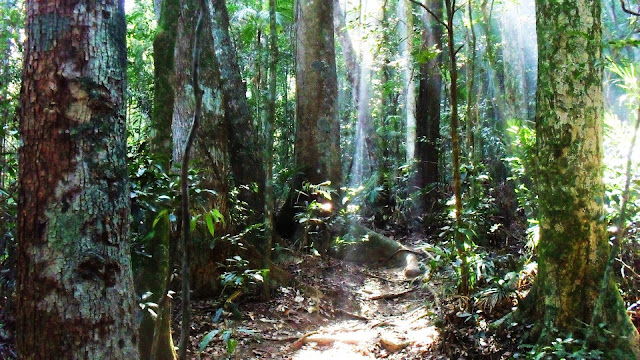 |
| Christ the Redeemer hike |
 |
| Tijuca national park |
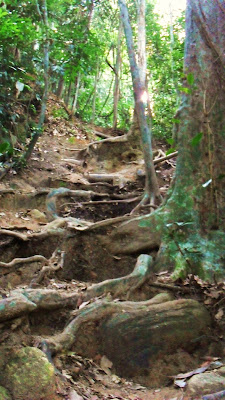 |
| Christ the Redeemer hike |
 |
| Parque Lage Mansion |
Botanical Gardens (Jardim Botanico) : Rio De Janeiro Botanical Gardens is an oasis right in the middle of the city. A corridor of 130 Royal palms will led you into a garden of 54 hectares; home of 6500 species of plants. Founded in 1808: Rio De Janeiro Botanical Gardens is part of a 140 hectares park, on the slopes of Corcovado mountain. This beautiful gardens offer the possibility to enjoy tropical flora and fauna in total security and relax. In fact Rio De Janeiro Botanical Gardens is also home of 140 species of birds; but also monkeys and other animals. Inside the numerous greenhouses instead: you will find important collections of bromeliads and orchids.
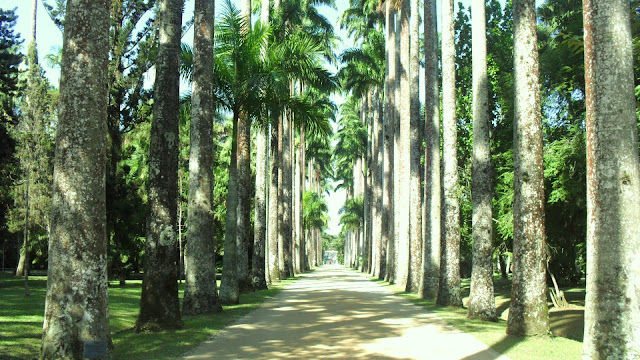 |
| Rio De Janeiro Botanical Gardens |
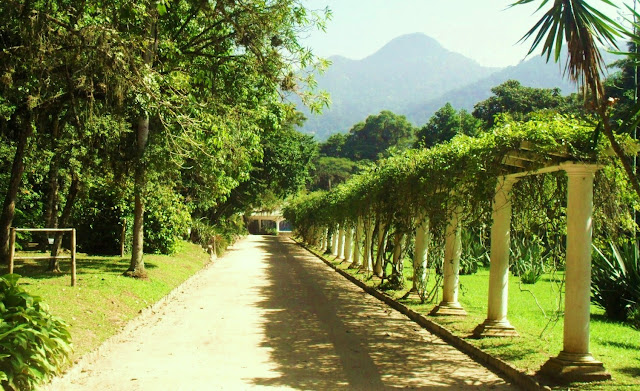 |
| Rio De Janeiro Botanical Gardens |
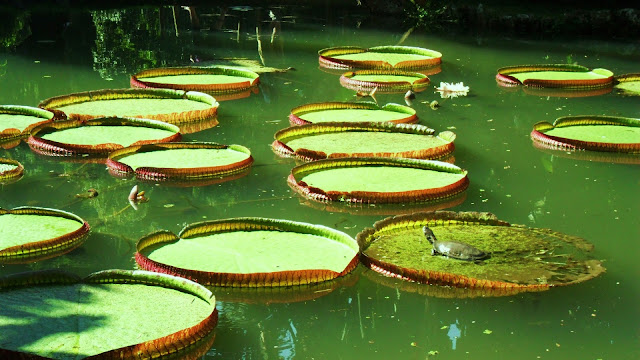 |
| Rio De Janeiro Botanical Gardens |
Rio De Janeiro beaches : Rio De Janeiro is world known for its beautiful beaches right in the heart of the City. Names like Copacapana beach, or Ipanema, do not need to be advertised in almost any country of the world. Copacabana and Ipanema are a meeting point in Rio De Janeiro. This is also the most touristed part of the city. These two Rio's beaches have different characters. The overcrowded Ipanema: is more touristed and fashionable. Copacabana, is wider and less crowded.
 |
| Copacabana beach |
 |
| Copacabana beach |
Sugar Loaf ( Azucar Pan ) : Sugar Loaf is maybe the second simbol of Rio De Janeiro, after Christ de redeemer statue. Sugar Loaf is a granitic peak of 396 meters that rise from the middle of Rio De Janeiro bay. The view from the summit of Sugar Loaf is one of the most impressive and scenic view in the world, and certainly the best view in Rio De Janeiro. It is possible to reach the summit of Sugar Loaf with the famous cable car line inaugurated in 1912 and renewed two times since. Passengers take two different cable cars. The first car ascends to Morro da Urca, at the high of 220 meters. The second car ascends to Sugar Loaf (Pao de Acucar ) at the high of 396 meters. Once on top of both Morro da Urca and Sugar Loaf you'll have free time to spend looking at the most amazing view on Rio De Janeiro. On the top of Sugar Loaf there is also a bar restaurant. Sugar Loaf and the cable car station can be very crowded, and the
waiting can be hours long. I advise to avoid the weekend dates as well as the late morning or late afternoon hours. The best time to visit Sugar Loaf is in the first morning and in the first afternoon. Sugar Loaf open from 8:00 am to 8:00 pm. My personal advise is to visit Sugar Loaf in the morning, when you can have a clear view of all the surroundings. The fare for Sugar Loaf is about 25 dollars per adult.
 |
| Sugar Loaf view |
Start to plan your travel now, and don't forget to post your comments or personal experiences on the topic!















No comments:
Post a Comment
Post your comment